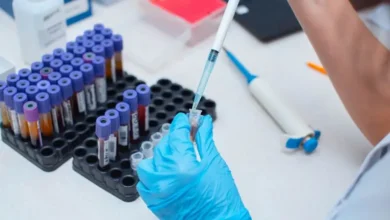Leaves falling, berries ripe, but it’s hot. Is autumn coming early?
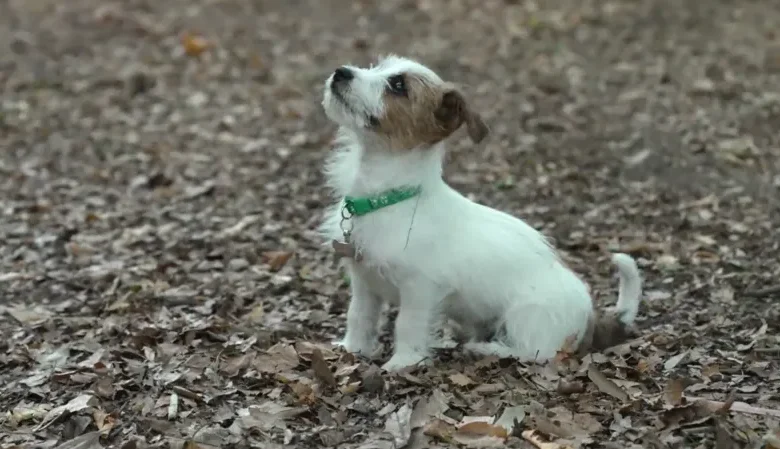
It’s still hot in many parts of the UK, but some tree leaves are turning yellow and blackberries are so ripe in hedges that they’re tasting alcoholic.
Councils in London have issued “do not sit under trees” warnings because of the dangers of dying branches suddenly falling.
What’s going on? Is it still summer, or has autumn started already? And does it matter anyway?
There is no formal definition of “early autumn” but experts say signs of the season, like leaves falling or apples being ready to pick, are actually nature becoming stressed by the long hot and dry summer.
And a potentially historic one at that – the Met Office says this summer is on track to be one of the warmest since records began in 1884.

In Cardiff, Wanda O’Connor has grown melons outside for the first time since she started growing food six years ago.
She shows me ripening limes and lemons inside her allotment greenhouse. “It’s 38-39C in here,” she says, pointing to a thermometer.
Aubergines, red peppers, courgettes and lots of tomatoes have all thrived in the above-average temperatures and extra sunshine hours.
At the same time, classic autumn fruits like blackberries and apples – normally ready in September – are hanging off the branches.
Conservationists are still gathering data about whether this is record-breaking. Blackberries were seen in London on 22 June, according to the Woodland Trust. By contrast the earliest in 2024 was 4 July in Southampton – but scientists need more information to be certain about the long-term trend.
For Wanda in Cardiff, this has meant more food to take home for dinner, but it’s harder work than usual for her to water her plants.
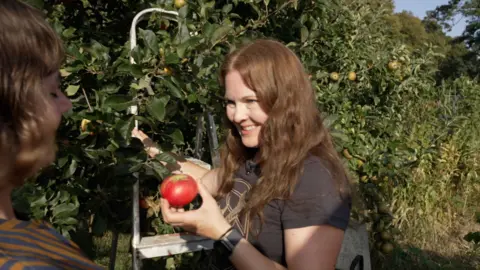
“In a normal year I’d come every three days, but this year it’s every day. If I don’t, the plants will die,” she explains.
Farmers across the UK have, too, seen early harvests with some crops struggling in the heat, prompting concerns about food prices.
Last month, the Environment Agency said North West England, Yorkshire, the East Midlands and West Midlands were in drought. Parts of Wales, including the Cardiff area, have had the driest six months since 1976 and are in drought as well.

The UK has had 71% of the average rainfall for the season so far when it should be 79% by this date, according to the Met Office.
And we’ve had 89% of the average sunshine hours for summer. The Met Office says we would expect 79% by this point.
Climate change is affecting the timings of biological events including spring and autumn, according to the Met Office, although the level of change varies year-to-year.
At the Botanical Garden of Wales in Carmarthenshire, Luke Cheesman is having to work harder than usual to keep the garden healthy and attractive for visitors.
He’s seen signs of stress like tree leaves turning yellow and falling, and branches drooping – so alongside extra water, he’s mulching trees adds organic material is added on top of the soil to keep it moist. He says this is good advice for those with plants or trees suffering at home.
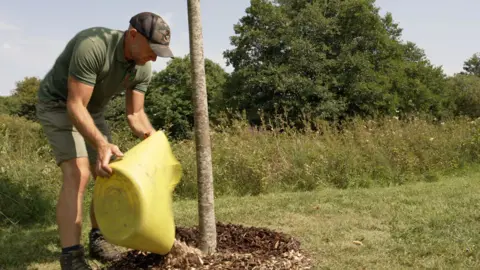
“We’ve had three almost back-to-back heatwaves. It’s not giving the trees much chance to recover,” he says.
It’s a similar story at Kew Gardens in London, where head of tree collections Kevin Walker says the last drought in 2022 killed nearly 460 of his trees – and he’s seeing the same stress again.
English oaks are losing leaves on the canopy and producing deadwood, he says, and Norway Maple and magnolias are showing signs of stress.
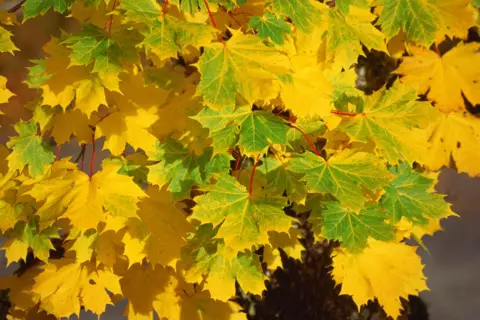
“They’re throwing their leaves, and will try and sit it out till next year,” he says, while “summer branch drop” – where trees try to save energy by losing branches – is also happening which can be dangerous to people nearby.
“It’s a live fast, die young strategy. That may work for a one in 10 year event. But instead of a drought or stress period being a one-in-10 year event, it’s becoming a one in every two or three years,” he says.
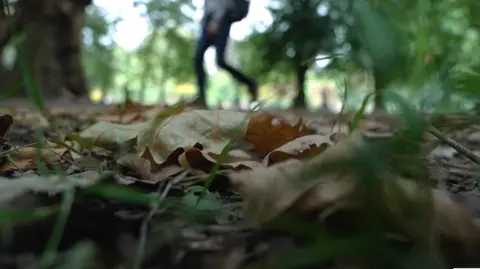 Getty Images
Getty ImagesBut does it matter if autumn conditions come early?
The Wildlife Trusts says this is a sign of “nature shutting down” and that it is likely to have impacts into the winter and next year.
“Some things are not dying, but they’re not thriving, they’re not growing, they’re not photosynthesizing. They’re going into survival mode,” says Kathryn Brown, director of climate change and evidence at the Wildlife Trusts.
“The overriding thing is it’s making everything much more chaotic for wildlife,” she says.
Earthworms, which feed badgers and hedgehogs, are living inside rock hard and dry soil, meaning the animals could struggle to dig to find them and may have to travel further for food.
Birds will look for fruits like blackberries to “sustain them through the autumn and winter,” she says. But where the crop comes early, the birds could go hungry.
Bees are also showing signs of shutting down for the winter, after flowering plants finished producing pollen and nectar in the hot weather. That could leave bees without enough food.
It will take time to work out the role of climate change in the heatwaves this year but scientists are clear that it will have boosted the heat.
“I’m very worried about what we’re seeing already, and this is just a point that we’re passing through on the way to much more extreme conditions,” says Kathryn.
“Species have evolved to exist in a seasonal cycle. If that cycle is breaking down, those species will break down as well. We know it’s a real risk we’ll lose huge chunks of nature due to climate impacts.”

